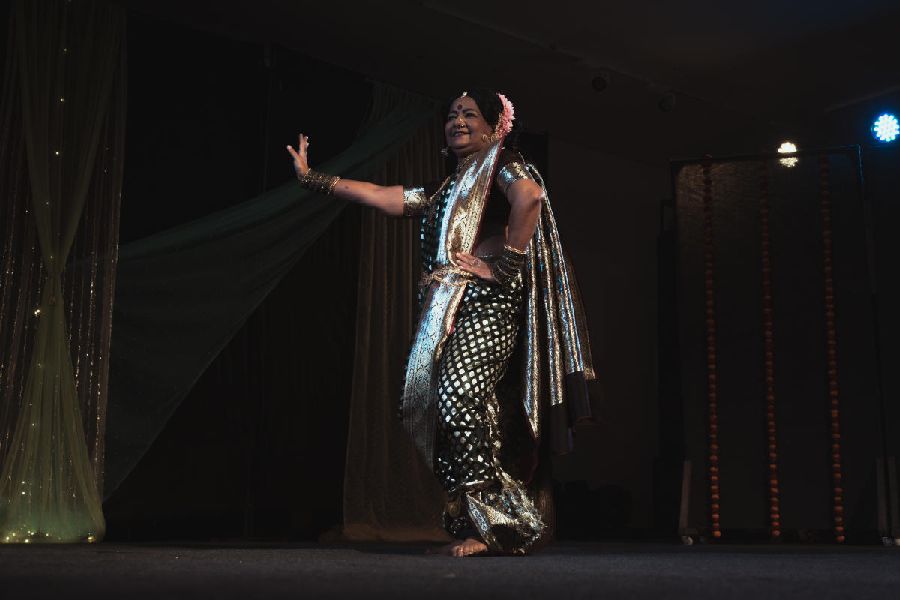A mischievous smile here, a flirtatious glance there, an abundance of persuasive movements aided by a choreography that is unstructured yet adherent to the tenets of tradition, not to mention comic interludes peppered with social messaging — all this constituted Lavani Ke Rang, a presentation in the dance-theatre repertoire, held at the Kolkata Centre for Creativity Amphitheatre recently. Originating in 18th-century Maharashtra under the Peshwa regime, Lavani, derived from the root word, lavanya, is a form of folk dance that epitomises grace and has the shringar ras at its core. What unfolded over more than 100 minutes was thus a confluence of Marathi folk tunes and dance recitals charged with unrestrained female eroticism.
Directed by Bhushan Korgaonkar, Lavani Ke Rang began with the sutradhar, Geetanjali Kulkarni, chronicling the history of the artform. The first recital, "Lahi lahi hote", described a lonely dancer awaiting her patron. The performers (Pushpa Satarkar and Gauri Jadhav), adorned in sequined sarees, ornaments and ghungroos, held the audience's gaze with their risqué postures, complementing the double entendres in the lyrics.
The Lavani doyen, Shakuntalabai Nagarkar (picture), then brought the roof down with a 'Sangeet Bari' dance, relying on abhinaya and impromptu conversations with the audience, which got transformed into Nagarkar's patron with whom she negotiated her ‘payment’. The transaction was incomplete without wolf whistles from the audience, with musical accompaniments like the dholak, tabla and harmonium adding to the cheer. But a subtle shift in the balance of power between the performers — marginalised women — and the patron — the audience — was made discernible through a rip-roaring sequence in which Nagarkar donned a jacket and a topi, impersonating a proprietor, and goaded his dancers to reject patrons as per their wish.
Different genres of Lavani were presented that shed light on the unconventional lives of dancers, including the indigenous 'private baithak', the avant-garde 'travel-and-tour' Lavani, and the one depicting the prejudices associated with menstruation. Kulkarni's narration, full of witty one-liners, connected these diverse threads.











